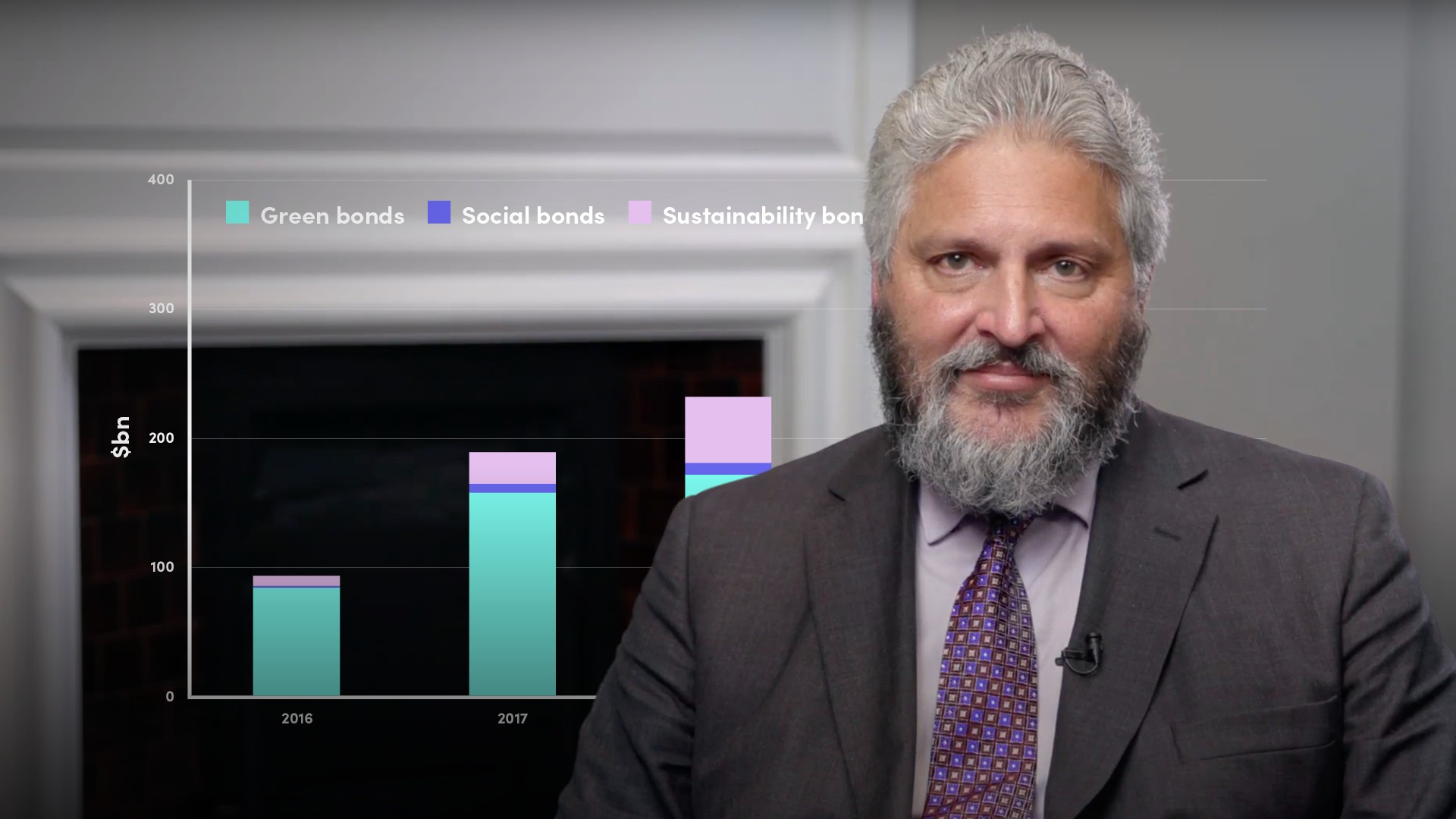
Social Bonds Introduction

Keith Mullin
35 years: Capital markets editorial
In the introductory video to this social bonds series, Keith defines a social bond and discusses their different applications. He further outlines the development of the social bond market along with the key challenges the market faces today.
In the introductory video to this social bonds series, Keith defines a social bond and discusses their different applications. He further outlines the development of the social bond market along with the key challenges the market faces today.
Subscribe to watch
Access this and all of the content on our platform by signing up for a 7-day free trial.

Social Bonds Introduction
10 mins 36 secs
Key learning objectives:
Describe labelled social bonds
Identify the areas social bonds have been issued to finance
Identify who issues social bonds
Understand how social bonds differ from conventional bonds
Understand how big the social bond market is
Outline some key challenges to the social bond market
Overview:
Labelled social bonds finance or refinance projects intended to offer target populations opportunities for social and economic betterment and improved wellness. Eligible use-of-proceeds can span multiple sectors, so the social bond market has a wider group of potential issuers than the green bond market. Labelled social bonds have experienced a meteoric rise in 2020 as Covid-19 created large-scale need to fund public-health projects and economic fallout quickly.
Subscribe to watch
Access this and all of the content on our platform by signing up for a 7-day free trial.
What are labelled social bonds?
- Bonds issued with social label or descriptor
- Sold into the institutional market
- Proceeds formally assigned to eligible social projects
- Projects aimed at assisting specific target populations
- May be aligned with the Social Bond Principles
- May be issued under the umbrella of issuers’ Social Bond Frameworks
- May be accompanied by a report from a second-opinion provider and/or a score or evaluation from a rating agency
Which areas have social bonds been issued to finance?
- Access to clean energy, food and water
- Gender
- Responsible farming and agriculture
- Affordable and social housing
- Healthcare, including Covid-19 response
- Social inclusion
- Education
- Inclusive business
- Sustainable Development
- Employee wellness
- Infrastructure
- Sustainable Supply Chains
- Employment and youth employment
- Microfinance and SME lending
- Transportation
- Food security
- Poverty reduction
- The UN’s Sustainable Development Goals
Who issues social bonds?
- Supranationals
- Sovereigns
- Regional authorities
- Municipalities
- State agencies
- Corporates
- Banks (to fund social lending portfolios)
How do social bonds differ from conventional bonds?
- Social bonds pay coupons comparable to those on conventional bonds
- Buyers of labelled product expect the same financial return as on conventional bonds
- Investors expect the same levels of liquidity from bank dealers
- Social bonds have identical credit profiles to conventional bonds
- But because ESG investors expand the distribution for ESG bonds and specialist investors can have more elastic spread tolerances than conventional investors (because of the imperative to buy ESG product), that could, on a given day, make ESG product price through conventional
- Labelled ESG bonds can trade richer than conventional bonds given the marginal bid from ESG investors. But we’re not yet at the stage where issuers can conclusively and consistently point to two yield curves – a conventional curve and a tighter ESG curve
How big is the social bond market?
Hard data is difficult to come by as there are no formal regulations, rules or standards that define social bonds, and data providers have their own rules. Part of the challenge is that social bonds have emerged under many formats, while some bonds with social use of proceeds don’t even come with a social label. At the height of Covid-19, for example, close to $300bn in bonds of various types had Covid in the title or listed in use of proceeds. That included:
- Labelled social bonds aligned with the Social Bond Principles (SBP)
- Labelled social or Covid-19 bonds not aligned with the SBP
- Unlabelled bonds where issuers listed Covid-19 or healthcare under use of proceeds
- Sustainable bonds where proceeds were split between environmental and social projects
- Chinese Epidemic and Control Bonds
But only a small percentage of those can be considered social bonds in the way purists see the market: issued under social linked bond frameworks and aligned with the Social Bond Principles. With those filters, market participants put the social bond total for the first half of 2020 to $40bn.
What are some of the challenges to the social bond market?
- Because it covers so many themes, the market has become somewhat amorphous
- Labelled social bonds have come to market using dozens of labels
- Many have Social, Sustainable or Sustainability in the title
- Others list specific themes (Affordable Housing, Education, Health etc)
- Some (e.g. Water Bonds or Clean Energy Bonds) address social and environmental themes
- Issuers have used an array of acronyms to describe their bonds: ESG (Environmental, Social and Governance), SRI (Socially Responsible Investing), SDG (UN Sustainable Development Goals) or they issue KPI-linked bonds (general-purpose bonds with covenants linked to environmental or social Key Performance Indicators)
- Given the lack of standardisation and issuer self-labelling tendencies, it is hard for investors to compare one social bond with another; even those nominally targeting similar areas
Subscribe to watch
Access this and all of the content on our platform by signing up for a 7-day free trial.

Keith Mullin
There are no available Videos from "Keith Mullin"



























